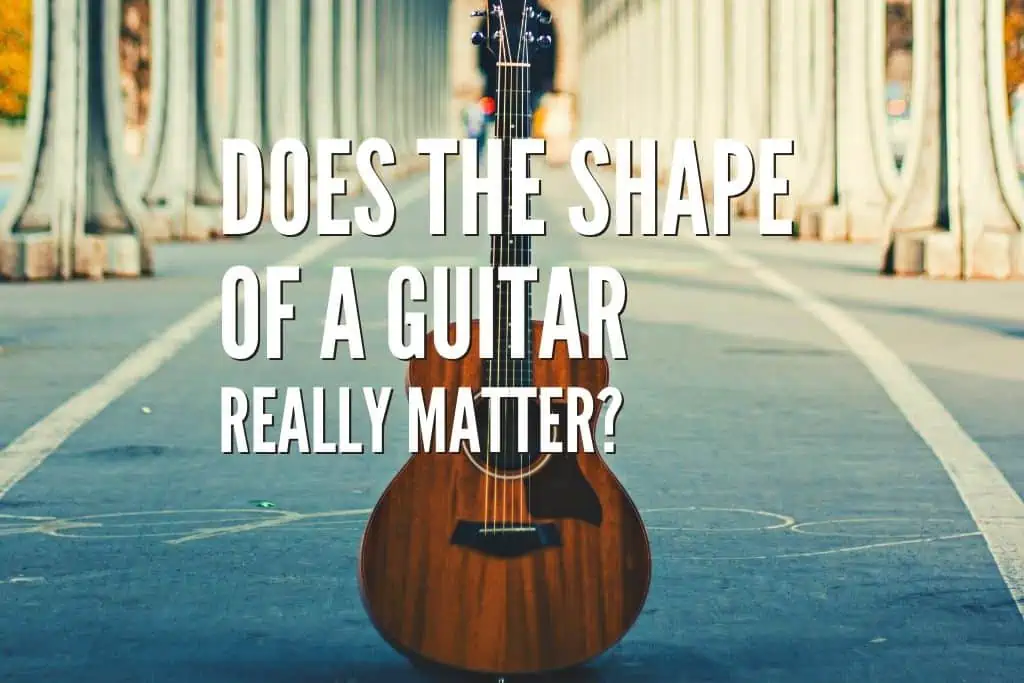When it comes to guitars, they can come in many different shapes and sizes. Many guitarists, especially beginners, may wonder if the shape of the guitar matters and will it affect their playing and sound?
The answer is yes. It most definitely matters, and it will make a difference in sound and playability. With a guitar that does not have the right size and shape for you, it will be harder to learn and progress with the instrument. Plus, different shapes create different tonal characteristics, which results in different sounds.
Choosing the right size and shape is one of the most important things when buying a new guitar. It is important to find that mid-point between the guitar that sounds big and wide while keeping its body size and shape right for you. Still, this is not a necessary fact for all guitars.
Do Acoustic Guitar Shapes Matter?
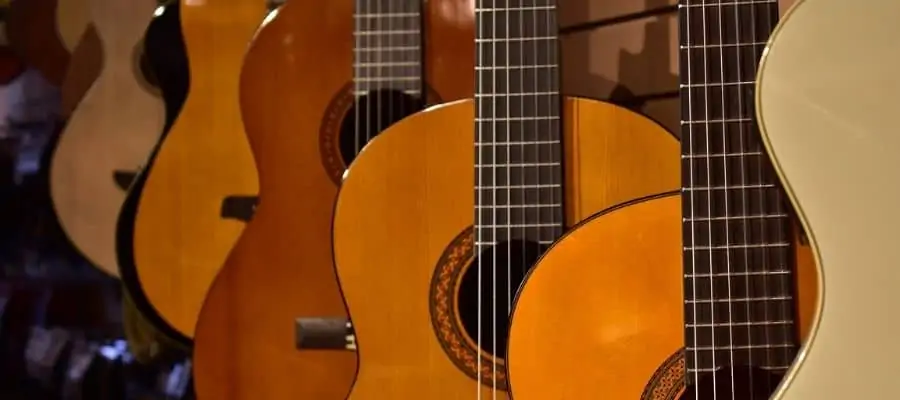
When it comes to acoustic guitars, the shape and type of wood are among the most important factors. It is important to have a guitar that fits your body size. If you have an oversized guitar, you will have trouble playing guitar the right way.
The shape of the guitar will have a huge influence on the guitar’s sound. Apart from the type of wood used for the guitar body, the shape of the guitar can make a big difference in the guitar’s resonance.
On the other hand, we also have guitar playability and comfort. You can find a lot of guitars today that have an interesting body shape, but some of them may not be too comfortable to hold and play.
For beginner guitar players, having an incorrect guitar size and shape that is not comfortable can seriously affect their learning process. When buying a new guitar, remember that the looks of the guitar should not overshadow the comfort of holding and playing it.
Why Are Acoustic Guitars Shaped The Way They Are?
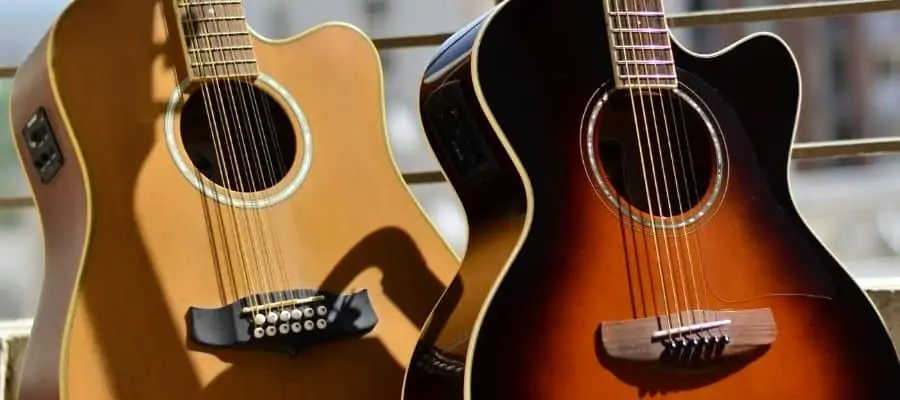
In the roots of the guitar making, guitar makers mostly made the guitars for men. To find a way to make guitars more appealing to them, guitar makers made guitars shaped in a way that resembled a woman’s body. So for an average guitarist during that time, having a guitar in his lap would be like holding a lady.
The guitar body also has to endure the abuse of the guitar player himself. No matter how careful you are, at some point, you will hit it against something, scratch it, or worse. Many guitarists like to lean on the guitar with almost all of the torso weight when sitting down. The lady-like shape has proven to be the most resilient of them all.
Do Electric Guitar Shapes Matter?
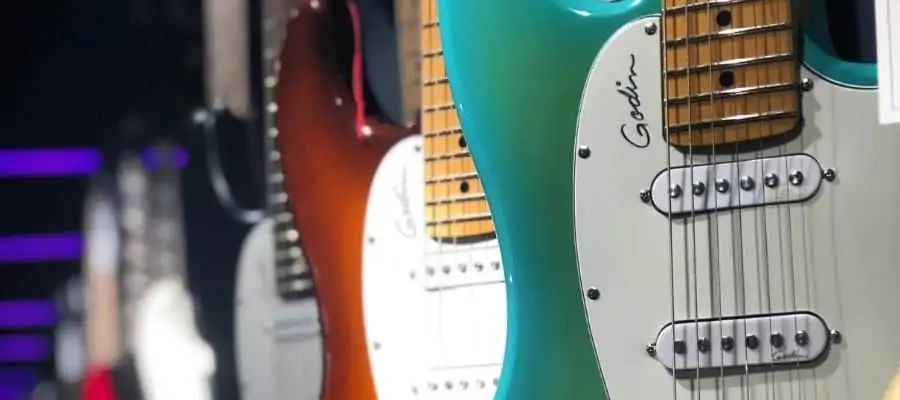
When talking about electric guitars, the matter of shape is much more flexible than with acoustic guitars. For acoustic guitars, the shape of the body has a big influence on the guitar’s sound. For electric guitars, all shapes will pretty much give the same sound since the major part of the sound depends on the type of magnets and wood. But still, keep in mind that different shapes will, most of the time, slightly sustain differently.
On the other hand, you have the playability aspect. This is where the shape of the guitar is the most important. As with acoustic guitars, having the guitar size too big or too small for you will affect your playing. It is also important that the guitar is well balanced and that it is not too heavy on one side.
When guitars were mass-produced with thinner necks, this was a repercussion with guitars being too heavy on the body side, and it would be harder to play them sitting down. A good example of guitars that tend to be heavy on a body side is Gibson’s Les Paul guitars.
Why Do Electric Guitars Have That Shape?
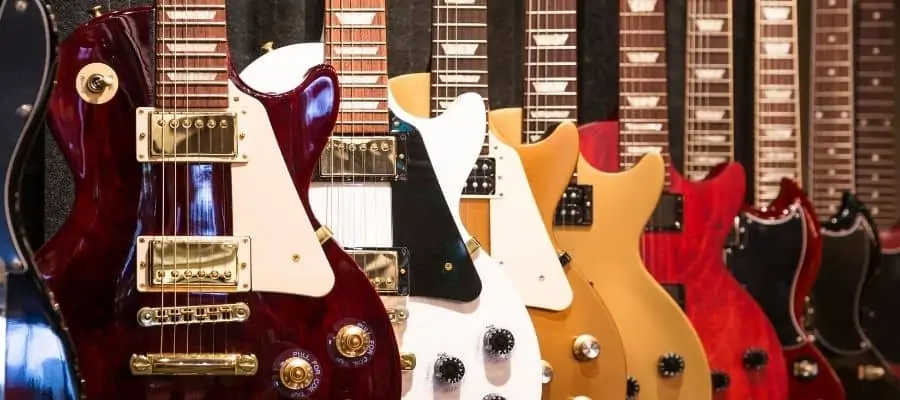
When electric guitars were invented, they were essentially acoustic guitars with pickups. This is why most of the guitar shapes today resemble the acoustic guitar. Since the first “electrification” of the guitar, the shape of the guitar has changed, but it has kept its roots.
In the history of electric guitar, there have been shapes that have remained recognizable and still are. Today, we have three different types of bodies of electric guitars:
- Solid-body guitars,
- Semi-hollow guitars,
- Hollow-body guitars
Solid-body guitars are made out of one solid piece of wood. One of the most famous guitars of this type is Fender Stratocaster. The advantage of solid-body guitars is that they sustain much better than other types and are more resilient to feedback. This led them to be used in live performances where the overall volume is high, in genres like rock or metal.
This family’s most famous guitar shapes are Stratocaster, Super Strat, Telecaster, Jaguar, Jazzmaster, Mustang, Flying V, Les Paul, and SG.
Semi-hollow guitars are guitars that have one or two f-hole openings on the soundboard. These guitars are divided into two parts by a block of wood running through the body. Unlike solid-body guitars, these guitars do not sustain well, but the difference is subtle. There is a difference in resilience to the feedback also. Semi-hollow guitars are more sensitive to feedback than solid-body guitars.
While they are most famous for being used by Jazz or Blues guitarists, it is not odd to have them played by rock musicians. These guitars represent the Gibson ES-335 with other honorable mentions such as Gretsch G5622T, Epiphone Casino, Ibanez Artcore AS73, and others.
Hollow-body guitars are usually associated with jazz guitarists with their big bodies, but these guitars are almost the same as semi-hollow guitars. The only difference is that hollow-body guitars do not have woodblock going through the body.
These guitars have more acoustic guitar characters to them than the electric guitar. That is why it is used so much in the softer genres of music. Also, they tend to feedback much more than semi-hollow guitars, so you will probably not see them being used in rock or metal music. The go-to choice for musicians who want to use hollow-body guitars would be the Gibson ES-175.
Does The Shape Of A Guitar Affect Its Tone?
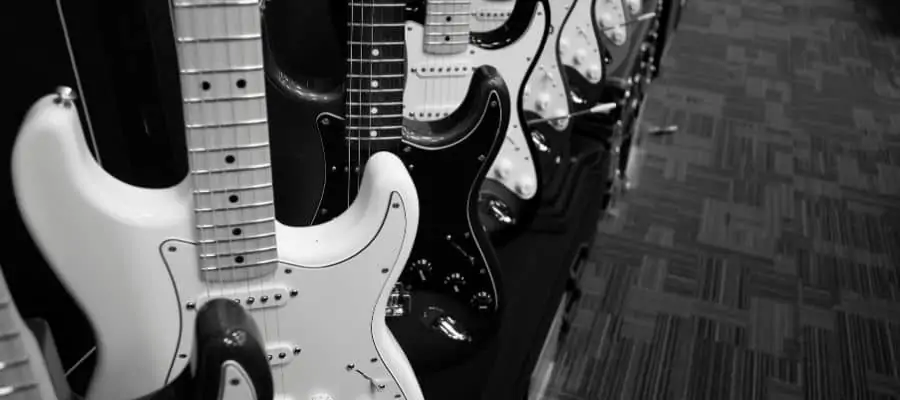
The shape of the guitar plays a major part in the guitar’s tone. The shape is especially important when it comes to acoustic guitars. Electric guitars will not be influenced by shape as much as acoustic guitars since the quality of their tone mostly depends on the type of body wood and pickups.
Different shapes of the acoustic guitar will deliver different sounds. The bigger body, the louder and thicker sound will be. Smaller guitars can sound way bigger than guitars with a bigger sound. Apart from the shape, the type of wood the guitar is made of is crucial for a good-sounding guitar. That is why sometimes you can get way more out of a smaller guitar than the bigger one.
Why Are Acoustic Guitars Different Shapes?
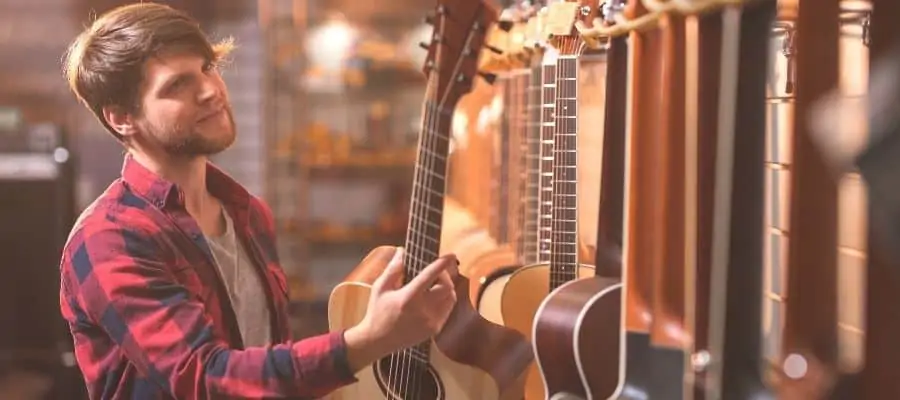
In the history of the guitar, we have witnessed many guitar companies introducing something new to the shape of the guitar. While most of them did this to make the design unique, some of the changes were there to improve the sound and quality.
No matter the size of the guitar, each of the shapes will bring a different character to the sound. Today, we have the five most famous and recognizable shapes: Dreadnought, 000/OM, Grand Auditorium, Jumbo, and Parlor.
One of the most used shapes is Dreadnought. This guitar shape is all rounded, producing a great bottom end with a high end that sticks out while playing. This guitar body is great since it allows you to play a wide range, from strumming to soloing.
The Parlor was the root of the design for the Dreadnought and the other guitar shapes. The Parlor is smaller than the others. This size of body and shape results in a natural compression and mid-oriented sound. The Parlor shape is perfect for players who travel a lot and are small.
000 / OM is similar to Dreadnought, but it has a shallower and wider body. 000 / OM-shaped guitars are much more comfortable than Dreadnought ones, but they lack that low end the Dreadnoughts have. Like Parlor, they also have a mid-oriented sound, perfect for fingerstyle picking.
The Grand Auditorium is among the more common guitar shapes today. It was first introduced by Bob Taylor in 1994. It is the mix of both worlds, full in the low-end and delivering clean high-end. This guitar shape is perfect for guitarists who play a wide range of music styles. It will deliver to almost each one of them.
The final shape is Jumbo. This guitar shape is the largest of all of the above. Having a large body gave them the ability to be super loud. These guitars are famous for their warm sound with fantastic sustain, so they are beloved by fingerpicking guitarists. Out of the pack, they produce the most natural volume.
How Do You Tell If Your Guitar Is A Dreadnought?
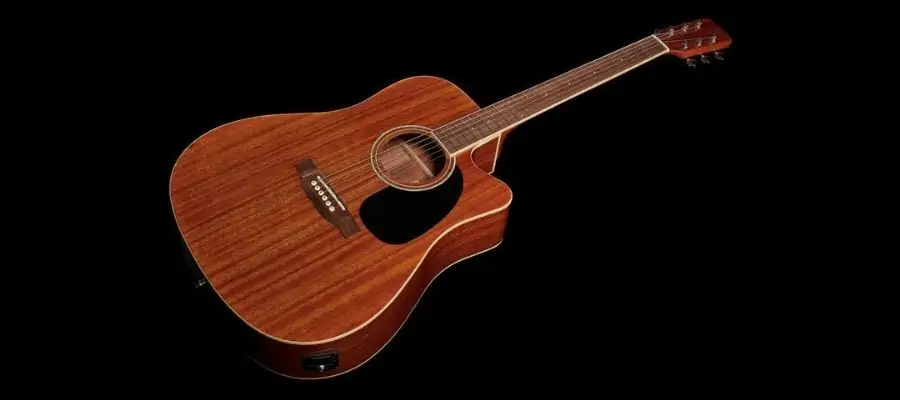
Dreadnought is one of the most commonly seen guitar shapes today. Its key feature is that it is rather big and has squared shoulders, with the neck being attached at the 14th fret. The Dreadnought design was first introduced by Taylor in 1916, and since then, it has kept the core of its design.
Taylor’s Dreadnought design ignited the idea for Gibson to create the Jumbo design, which somewhat resembles the Dreadnought with Jumbo being bigger and louder. The Dreadnought design is considered the best of all of the worlds, which leaves them being used most commonly.
Why Do Some Guitars Have A Curve?
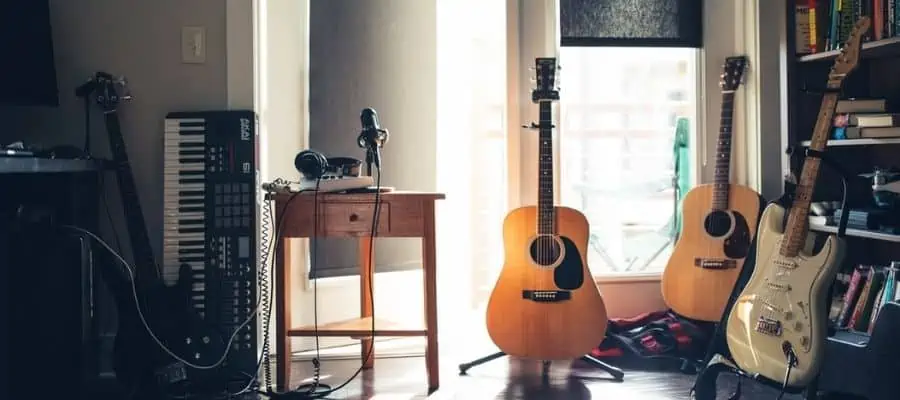
Most of the guitars today will have that hourglass body. This shape is simply proven to be the most comfortable to hold, and it provides the best relation between the high-end and low-end spectrum. The narrow part of the guitar is called the waist, and its position will decide how much low-end and high-end guitar will have.
If you wonder why some guitars have that cutaway design and some don’t, the answer is simple. The cutaway is there to allow the guitarist access to higher frets without his hand being stuck on the guitar’s body. Apart from being practical, it will make the guitar sound brighter. This design has been translated to almost every electric guitar today.
What Is The Best Shape For A Guitar?
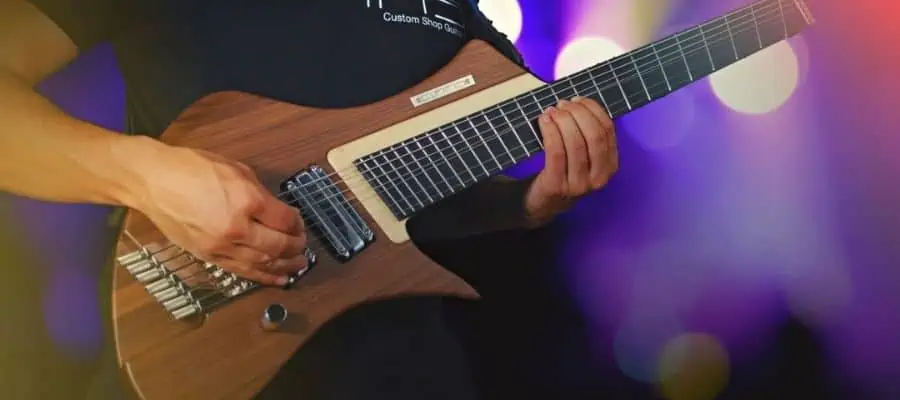
While the Dreadnought is the most commonly used guitar shape, this does not mean that it is perfect for you. Like many things with the guitar, it all depends on the person playing it. The same goes for electric guitars.
The most important thing is to find a mid-ground of guitar that is comfortable to play, and that sounds good. It is a journey that every guitarist must take to find the shape that suits the style of playing.
As a saying says, don’t choose a book by its cover. We can say the same for the guitars. Keep in mind that the guitar that looks good and interesting does not necessarily mean that it is good and sounds good.
What Shape Of The Guitar Is The Best For Beginners?

For every beginner guitarist, having the right guitar size and shape is one of the most important things. It can be deciding point on how fast the learning process will go.
Most beginner guitarists will go with the famous Dreadnought shape since it provides the best balance between size and projection. Still, for some people, this shape may be too big or too small. Most of the time, kids will have to find smaller guitar shapes, such as the Parlor, to give them an easier time when holding the guitar.
While they may not sound as big as the Dreadnought or Jumbo, you can get them with electronics that will allow you to use the amplifier to give yourself more volume. Most guitars today will come with electronics for amplification, so choosing the shape should not be too big of a problem.
As there are many different shaped guitars available today, finding the ideal one should not be a big problem. While most guitar shapes are similar in size, the nuances play important roles in comfort, playability, and sound. This is especially important with acoustic guitars. The best way to know if a guitar is ideal for you is to hold the instrument. If the guitar feels good in your hands and does not give you difficulties while playing, that is the right shape for you.
Conclusion
The question of if the shape of the guitar matters is simple. It most definitely matters. Finding a guitar with the right shape and size for you while sounding good is an important part of every guitarist’s life.
Since the guitars today come in almost all sizes and shapes, choosing the right guitar for you is made easy, and if you haven’t already found the right guitar for you, it is most likely waiting for you just around the corner.
If you found this article useful, you may want to save this pin below to your Guitar board.

Recent Posts
Some guitarists insist on buying an expensive amplifier with their electric guitar. They assume that this is a must for every type of guitarist out there. However, in some situations, this isn’t...
Top 50 Free Realistic Guitar VST Plugins With Sound Examples
As technology has rapidly advanced in the recent decade, computers are stealing more and more roles from physical musical instruments and accessories. Nowadays, you do not need expensive amps,...

